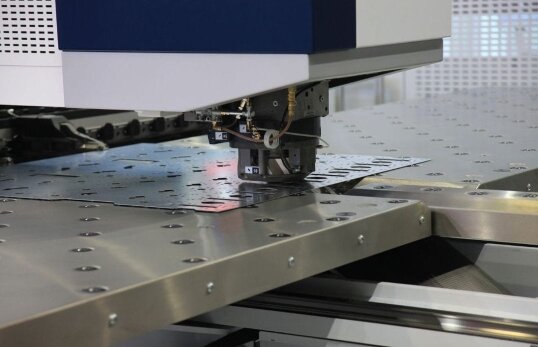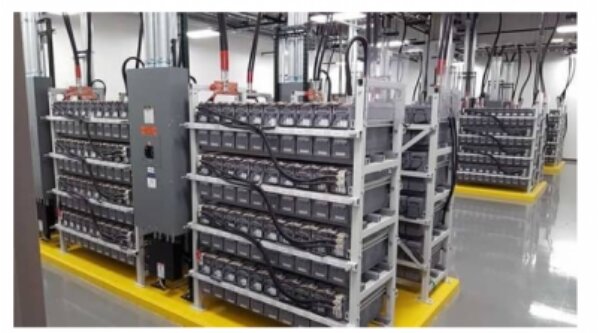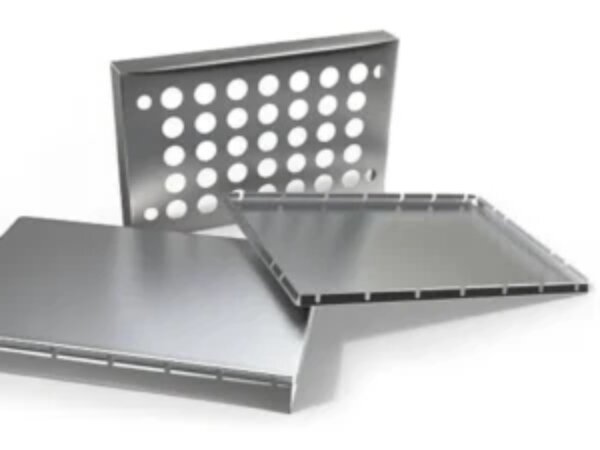في تصنيع المعادن، غالبًا ما يحظى القطع والثني بأكبر قدر من الاهتمام. ولكن ما يشكل حقًا قوة الجزء ومظهره يأتي بعد تلك الخطوات - التشطيب. يمكن أن تؤدي المعالجة السطحية المناسبة إلى تحويل جزء عادي إلى جزء يقاوم الصدأ والتآكل وآثار سنوات من الاستخدام. وبدون ذلك، يمكن حتى للمكونات جيدة الصنع أن تتعطل قبل الأوان.
يحمي تشطيب الصفائح المعدنية وطلائها الأجزاء من البيئات القاسية. فهي تعزز الأداء وتحسن المظهر وتحافظ على موثوقية الأجزاء بمرور الوقت. سواء كنت تقوم بتصميم القطع، أو شراء المكونات، أو إدارة الإنتاج، فإن اختيار التشطيب المناسب يمكن أن يؤثر بشكل كبير على المتانة والجودة.
تبحث هذه المقالة في العديد من طرق التشطيب والطلاء القياسية، بما في ذلك الطلاء بالمسحوق والأكسدة والطلاء الكهربائي والتخميل. كل طريقة لها مزاياها الخاصة. من خلال فهم كيفية تأثير التشطيبات المختلفة على القوة ومقاومة التآكل والمظهر، يمكنك اتخاذ خيارات أكثر استنارة تعزز أداء منتجك وعمره الافتراضي.
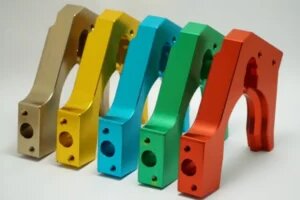
ما هو تشطيب الصفائح المعدنية؟
تشطيب الصفائح المعدنية هي المرحلة الأخيرة من التصنيع التي تعزز مظهر الجزء وقوته وأدائه. وتستخدم طرق ميكانيكية أو كيميائية أو كهروكيميائية لمعالجة سطح المعدن. تعمل هذه العمليات على إزالة العيوب الطفيفة وتنعيم المناطق الخشنة وتجهيز الأجزاء للطلاء أو الطلاء. ويضيف الطلاء النهائي أيضاً طبقة واقية تساعد على منع الصدأ والتآكل وتآكل السطح.
يمكن للتشطيب الجيد أن يحول المعدن المكشوف إلى جزء جاهز للاستخدام على المدى الطويل. ويمكنها إيقاف الأكسدة في الظروف الرطبة أو الخارجية وتقليل الاحتكاك بين الأجزاء المتحركة. كما تسهّل الطلاءات النهائية تنظيف الأجزاء وتساعدها في الحفاظ على مظهرها لفترة أطول.
الأنواع الشائعة من تشطيب الصفائح المعدنية
كل طريقة تشطيب لها نقاط القوة الخاصة بها اعتمادًا على وظيفة الجزء وبيئة العمل. فيما يلي بعض التشطيبات الأكثر شيوعًا وفعالية المستخدمة في تشطيبات أجزاء الصفائح المعدنية.
تفجير الخرزة
تفجير حبة يستخدم خرز زجاجي دقيق وهواء مضغوط لتنظيف الأسطح المعدنية وتنعيمها. تزيل هذه العملية الصدأ والأكسدة وعلامات التصنيع مع الحفاظ على الأبعاد الدقيقة للجزء. وهي تُنشئ سطحًا غير لامع أو غير لامع مع خشونة تتراوح بين 1.0 و3.0 ميكرومتر تقريبًا، مما يجعلها قاعدة مناسبة للطلاء أو الطلاء لاحقًا.
يستخدم غالبًا على الفولاذ المقاوم للصدأ والألومنيوم والفولاذ الطري. يعمل السفع بالخرز على تعزيز التصاق الطلاء ويوفر للأجزاء مظهرًا نظيفًا ومتساويًا يخفي عيوب السطح الطفيفة. إنه خيار ممتاز عندما تكون هناك حاجة إلى مظهر متناسق وملمس ناعم.
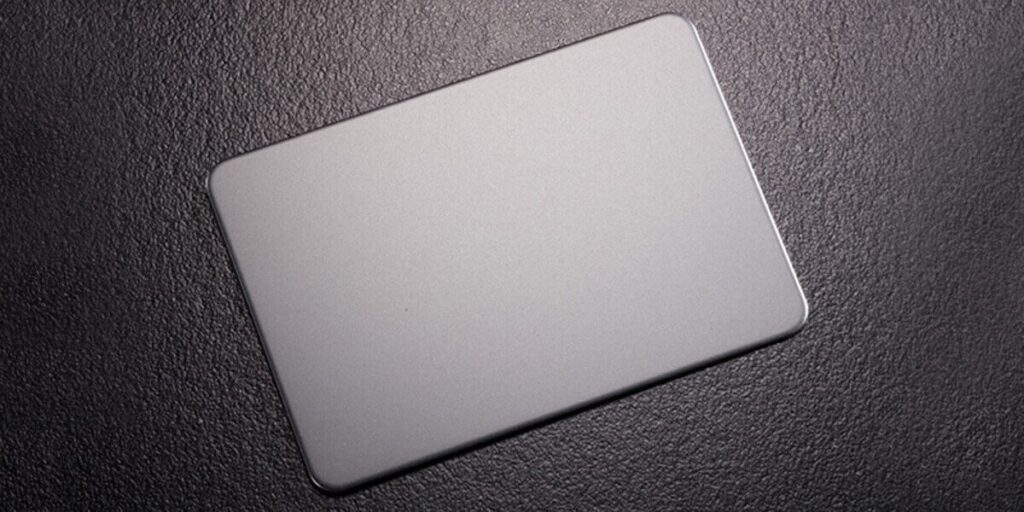
مسحوق الطلاء
مسحوق الطلاء تتضمن رش جزيئات المسحوق المشحون على سطح معدني مؤرض، ثم معالجتها في فرن عند درجة حرارة 180-200 درجة مئوية. يشكل المسحوق المذاب طبقة متصلة ومتينة يتراوح سمكها بين 60-120 ميكرومتر.
يوفر هذا الطلاء حماية ممتازة ضد التآكل والصدمات والأضرار الناجمة عن الأشعة فوق البنفسجية، مما يجعله مناسبًا للتطبيقات الداخلية والخارجية على حد سواء. تحافظ الأجزاء المغطاة بالمسحوق على لونها ولمعانها لسنوات، حيث لا يظهر عليها سوى الحد الأدنى من البهتان أو التقشير. مع وجود عدد لا يحصى من الألوان والأنسجة للاختيار من بينها، تُستخدم هذه الطلاء على نطاق واسع في الأجزاء المغطاة والأثاث وأجزاء الماكينات التي تحتاج إلى قوة وجاذبية بصرية.
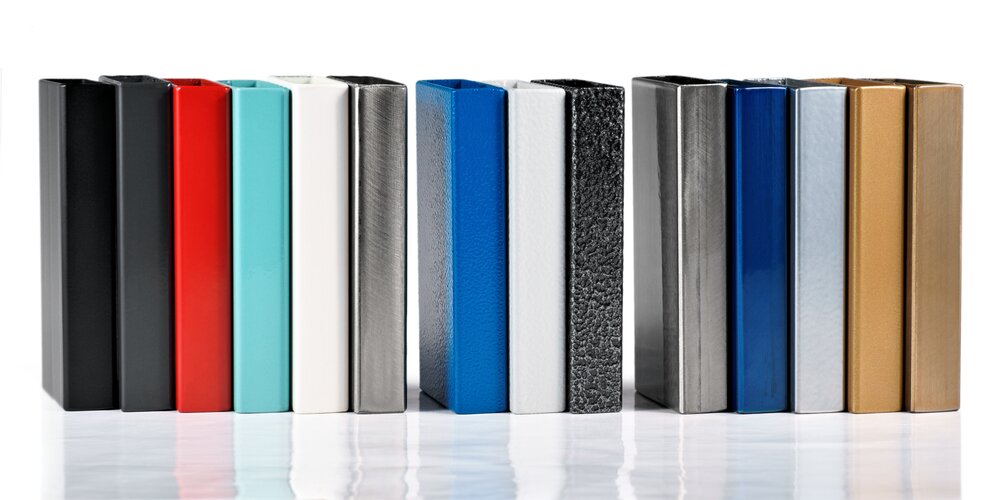
تلوين
تلوين تضيف طبقة رقيقة تتراوح بين 30 و50 ميكرومتر من الطلاء السائل لحماية المعدن وإضافة اللون. يتم تنظيف السطح ومعالجته في بعض الأحيان بطبقة فوسفات لتعزيز التصاق الطلاء. ثم يتم خبز الأجزاء عند درجة حرارة 120-150 درجة مئوية لمعالجة الطلاء وزيادة المتانة.
تُستخدم الدهانات المختلفة لأغراض مختلفة:
- طلاء إيبوكسي مقاومة قوية للمواد الكيميائية ومناسبة تماماً للماكينات الصناعية.
- طلاء أكريليك يجف سريعاً ويعمل بشكل جيد للأثاث الداخلي أو شاشات العرض.
- طلاء بولي يوريثان تتحمل أشعة الشمس والمطر، مما يجعلها مثالية للاستخدامات الخارجية.
يتسم الطلاء بالمرونة من حيث خيارات الألوان واللمسات النهائية، كما أنه فعال من حيث التكلفة للنماذج الأولية أو الدفعات الصغيرة. وعلى الرغم من أنها ليست قوية مثل طلاء البودرة، إلا أنها تعطي سطحًا جذابًا وسهل التنظيف مع حماية قوية من العوامل الجوية.
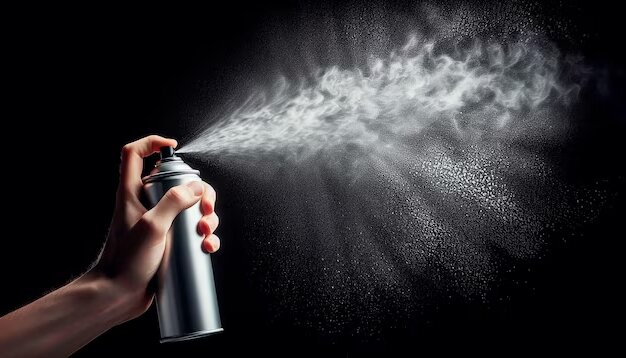
الكهربائي
الكهربائي يستخدم تيارًا كهربائيًا لطلاء جزء بطبقة رقيقة من معدن آخر، مثل الزنك أو النيكل أو الكروم. يبلغ سمك الطلاء عادةً 2-25 ميكرومتر.
- طلاء الزنك يوفر مقاومة للتآكل ومظهر فضي لامع.
- تصفيح بمعدن النيكل تضيف صلابة ومقاومة للتآكل.
- تصفيح الكروم توفر لمسة نهائية تشبه المرآة مع متانة عالية.
تُستخدم الأجزاء المطلية بالكهرباء بشكل شائع في السيارات والمنتجات الإلكترونية ومنتجات الديكور، حيث يكون المظهر والأداء ضروريين.
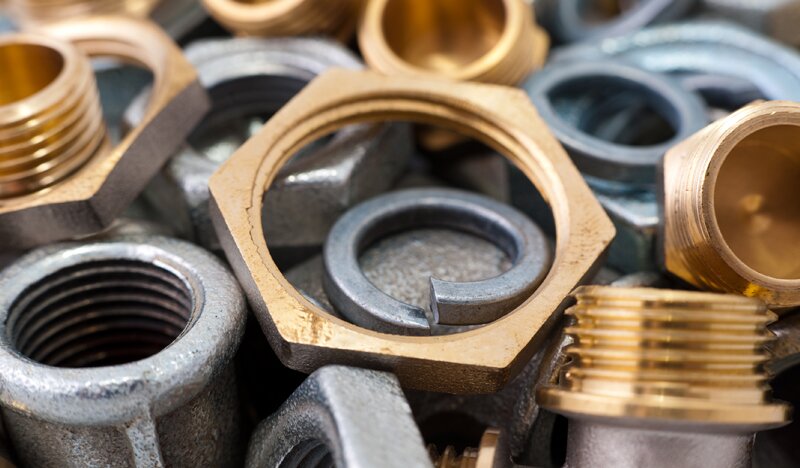
أنودة
أنودة يستخدم بشكل أساسي على الألومنيوم لتحسين مقاومة التآكل وصلابة السطح. يوضع جزء الألومنيوم في حمام حمضي، ويشكل تيار كهربائي طبقة أكسيد مترابطة بإحكام بسماكة 10-100 ميكرومتر.
يمكن صبغ الألومنيوم المؤكسد بمجموعة متنوعة من الألوان. ونظراً لأن الصبغة يتم امتصاصها في طبقة الأكسيد، فإنها لن تتشقق أو تتقشر. بعد ذلك، يتم غلق السطح بالماء الساخن لإغلاق المسام وتثبيت اللون.
- الطلاء بأكسيد الألمنيوم من النوع الثاني (حمض الكبريتيك) شائع للاستخدام الاستهلاكي والمعماري.
- الطلاء بأكسيد الألمنيوم من النوع IIIتُعرف أيضًا باسم الأنودة الصلبة، وتنتج طبقة أكثر سمكًا وصلابة للأجزاء الفضائية والصناعية.
كما توفر الأجزاء المؤكسدة أيضًا عزلًا كهربائيًا قويًا، مما يجعلها مناسبة للأغلفة والمشتتات الحرارية والمكونات الإلكترونية.

التخميل والغشاء الكيميائي
يعزز التخميل مقاومة الفولاذ المقاوم للصدأ للتآكل عن طريق إزالة الحديد الحر والشوائب من السطح. وتشكل طبقة رقيقة غير مرئية من الأكسيد دون تغيير مظهر الجزء.
بالنسبة للألومنيوم، يوفر طلاء غشاء كيميائي مثل تحويل الكرومات حماية مماثلة. هذه الطلاءات هشة، وعادةً ما يكون قياسها أقل من ميكرومتر واحد، وتحافظ على التوصيل الكهربائي مع مقاومة الأكسدة. تُستخدم كلتا المعالجتين بشكل شائع في العبوات والتركيبات الكهربائية حيث تكون الموصلية ومقاومة التآكل ضرورية.
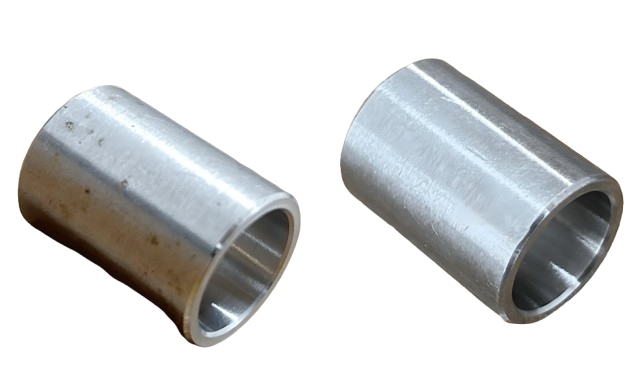
طلاء إلكتروني
الطلاء الإلكتروني، المعروف أيضًا بالطلاء الكهربائييطبق الطلاء بالتساوي باستخدام مجال كهربائي. يتم غمر الجزء في حمام طلاء مائي وشحنه ثم خبزه عند درجة حرارة 160-190 درجة مئوية. يتراوح سمك الطلاء النهائي عادةً بين 20 و35 ميكرومتر، ويغطي حتى الأشكال المعقدة والزوايا الضيقة.
يوفر الطلاء الإلكتروني لمسات نهائية ناعمة ولامعة مع مقاومة ممتازة للتآكل. ويستخدم على نطاق واسع في إنتاج السيارات والأجهزة الكهربائية لأنه يوفر تغطية متناسقة والتصاق قوي ومقاومة للتشقق والبهتان.
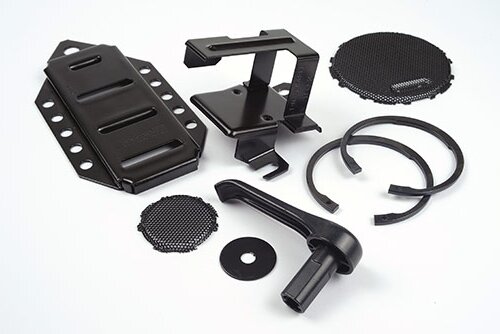
اسوداد ساخن
السواد الساخن، ويسمى أيضاً طلاء الأكسيد الأسودتشكل طبقة سوداء رقيقة على الفولاذ أو الحديد. يتم غمس الأجزاء في سلسلة من الحمامات الكيميائية الساخنة التي تخلق طبقة أكسيد سمكها حوالي 1 ميكرومتر.
توفر هذه اللمسة النهائية حماية خفيفة من التآكل، وتقلل من الوهج، وتعطي مظهراً داكنًا موحدًا. تُستخدم عادةً للأدوات والمثبتات والأجزاء الدقيقة التي تتطلب مظهراً احترافياً نظيفاً واحترافياً مع الحفاظ على الأبعاد الضيقة.
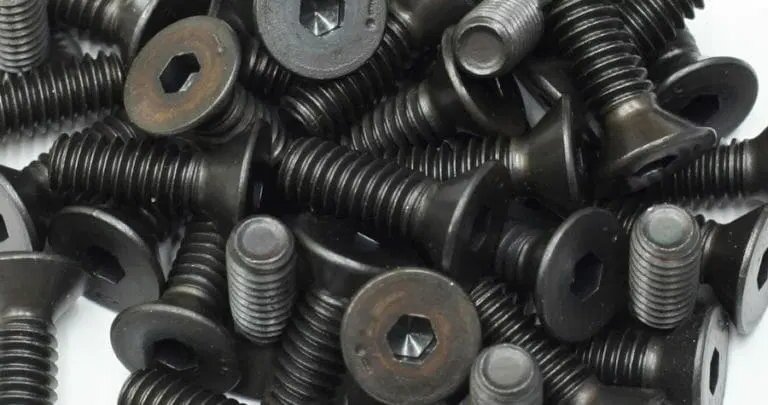
كيف يعزز تشطيب الصفائح المعدنية من الأداء?
تشطيبات السطح لا يقتصر تأثيرها على جعل الأجزاء تبدو جيدة - بل لها تأثير مباشر على مدى جودة أدائها ومدة استمرارها. يلعب كل نوع من أنواع المعالجة السطحية دورًا حاسمًا في حماية الجزء وتقليل التكاليف على المدى الطويل.
مقاومة التآكل والتآكل
غالبًا ما تواجه الأجزاء المعدنية ظروفًا قاسية، مثل الرطوبة أو المواد الكيميائية أو الاحتكاك. بدون تشطيب مناسب، يمكن أن تتسبب هذه العوامل في الصدأ أو الأكسدة أو تآكل السطح. تخلق التشطيبات مثل الطلاء بالمسحوق والأكسدة والطلاء الكهربائي طبقة واقية تمنع هذه المشاكل. على سبيل المثال، يمكن للحاوية الفولاذية المطلية بالمسحوق أن تقاوم الطقس الخارجي لسنوات، بينما يظل الألومنيوم المؤكسد ثابتًا في البيئات الرطبة أو البحرية.
كما تحمي التشطيبات أيضًا من التآكل الميكانيكي الناتج عن التلامس أو الحركة المتكررة. تجعل الأنودة الصلبة والطلاء بالنيكل الأسطح أكثر تعقيدًا وأكثر مقاومة للخدوش أو التآكل. ومن خلال الحد من التآكل والتآكل، يساعد تشطيب السطح على إطالة عمر القطعة ويقلل من تكاليف الصيانة - وهي ميزة رئيسية في كل من الإنتاج والاستخدام اليومي.
المزايا الجمالية والعلامة التجارية
تضفي اللمسات النهائية عالية الجودة على المنتج مظهرًا احترافيًا عالي القيمة. تساعد الطلاءات الملساء والمتساوية على أن تبدو الأجزاء دقيقة ومتينة مما يعزز ثقة العملاء في العلامة التجارية. تأتي التشطيبات، مثل الطلاء بالمسحوق والطلاء، في مجموعة واسعة من الألوان والقوام، مما يوفر للشركات المرونة اللازمة لتتناسب مع أهداف علامتها التجارية وتصميمها.
بالنسبة للمنتجات الاستهلاكية، فإن الشكل والمظهر مهمان بقدر أهمية الوظيفة. فالسطح المصقول أو طلاء البودرة اللامع يوحي بالجودة والاهتمام بالتفاصيل. بالإضافة إلى المظهر، تمنع الطلاءات النهائية أيضًا البهتان وتغير اللون، مما يساعد المنتجات في الحفاظ على مظهرها النظيف بمرور الوقت.
الأداء الكهربائي والحراري
تعزز بعض التشطيبات قدرة الجزء على التعامل مع الكهرباء أو الحرارة. يعمل الطلاء الكهربائي بالنيكل أو النحاس على تحسين التوصيل الكهربائي، مما يجعله مثاليًا للاستخدام في الأطراف والموصلات والمكونات الإلكترونية. من ناحية أخرى، يوفر الألومنيوم المؤكسد عزلًا حيث تحتاج الأجزاء إلى منع تدفق التيار، مثل العلب أو المشتتات الحرارية.
يمكن للتشطيبات أيضًا تعزيز نقل الحرارة. تحافظ الطلاءات الواقية التي تقلل من الأكسدة على أداء حراري مستقر، خاصة في المكونات مثل إمدادات الطاقة أو وحدات LED. يضمن اختيار الطلاء النهائي المناسب بناءً على الاحتياجات الكهربائية أو الحرارية تشغيل الجزء بأمان وكفاءة في ظروف العالم الحقيقي.
كيف تختار الطلاء النهائي المناسب للصفائح المعدنية؟
لكل جزء احتياجات أداء مختلفة، وتعتمد أفضل تشطيبات على مكان وكيفية استخدامه. فالاختيار الصحيح يحسن من الوظيفة والمظهر على حد سواء. فيما يلي النقاط الرئيسية التي يجب مراعاتها عند اختيار الطلاء النهائي.
كيف تطابق الطلاء النهائي مع الخامة؟
تستجيب المعادن المختلفة بشكل مختلف لطرق التشطيب. وتحدد المادة الأساسية ما هي المعالجات التي سترتبط بشكل جيد وتوفر حماية دائمة.
يعمل الألومنيوم بشكل أفضل مع الطلاء بأكسيد الألومنيوم الذي يعزز الصلابة ويوفر مجموعة من خيارات الألوان. كما أنه يتلاءم بشكل جيد مع طلاء المسحوق أو الطلاء عند الحاجة إلى مقاومة إضافية للتآكل أو الزخرفة.
يستفيد الفولاذ المقاوم للصدأ أكثر من غيره من التخميل والسفع بالخرز، الذي ينظف ويحمي دون تقليل مقاومته الطبيعية للتآكل. وللحصول على مظهر أكثر قتامة أو لمعانًا، يمكن استخدام الطلاء الإلكتروني أو الطلاء الكهربائي.
يحتاج الفولاذ الطري إلى حماية أقوى لأنه يصدأ بسهولة. يعد الطلاء بالزنك والطلاء بالمسحوق والطلاء خيارات شائعة لتشكيل حاجز صلب ضد الرطوبة والأكسدة.
غالبًا ما يتم استخدام النحاس والنحاس الأصفر مع طلاء شفاف أو طلاء النيكل لمنع البهتان مع الحفاظ على لونها المعدني. ونظراً لأن كل معدن يتفاعل بشكل مختلف مع بيئته، فإن اختيار طلاء متوافق يضمن أداءً يدوم طويلاً ومظهراً جذاباً.
| الإنهاء | الكربون الصلب | الفولاذ المقاوم للصدأ | الألومنيوم | سبائك النحاس | الصلب المجلفن |
|---|---|---|---|---|---|
| أكسيد الأسود | مناسب للأدوات والتركيبات والمثبتات؛ يضيف مقاومة خفيفة للتآكل. | لا تستخدم عادةً. | غير مناسب. | غير مناسب. | غير مناسب. |
| الكهربائي | يستخدم لطلاء الزنك أو النيكل أو الكروم لتحسين المظهر والحماية من التآكل. | عادة ما تكون غير ضرورية بسبب المقاومة الطبيعية للتآكل. | غير شائعة الاستخدام. | غالباً ما تُستخدم للتزيين أو الحماية من النيكل والكروم. | غير موصى به. |
| أنودة | غير مناسب. | غير مناسب. | شائع في قطع الألومنيوم؛ يحسن من مقاومة التآكل وثبات اللون. | غير مناسب. | غير مناسب. |
| تلوين | تشطيب شائع ومنخفض التكلفة؛ يضيف حماية من التآكل والعوامل الجوية. | تعمل كطبقة حاجزة إضافية؛ ألوان قابلة للتخصيص. | تشطيب مرن للنماذج الأولية والمنتجات الاستهلاكية. | يوفر مقاومة للألوان والبهتان. | تُستخدم عادةً للأجزاء الخارجية التي تحتاج إلى تجانس بصري. |
| مسحوق الطلاء | يوفر طلاء متين ومقاوم للصدمات؛ يُستخدم للماكينات والأجزاء الخارجية. | مثالية للاستخدامات الصناعية التي تحتاج إلى المتانة والمظهر الخارجي. | تشطيب زخرفي شائع مع حماية قوية من التآكل. | يطبّق لحماية لون يدوم طويلاً. | يعزز مقاومة التآكل على الأجزاء المغلفة مسبقًا. |
| التخميل | لا ينطبق. | يحسّن مقاومة التآكل وثبات السطح. | غير مناسب. | غير مناسب. | غير مناسب. |
| تلميع | يعزز نعومة السطح ويحسّن المظهر الخارجي. | تُنتج لمسة نهائية عاكسة أو مصقولة. | يحسّن الانعكاسية والنعومة. | تُستخدم للتحسينات الزخرفية. | يحسّن مظهر السطح ونظافته. |
| السفع الرملي | ينظف الأكسدة ويجهز الأسطح للطلاء. | يزيل الترسبات الكلسية ويعزز التصاق السطح. | يخلق ملمسًا موحدًا غير لامع. | يُستخدم للتنظيف والملمس قبل التشطيب. | إعداد السطح للطلاء أو الطلاء بالمسحوق. |
ما هي بيئة تشغيل الجزء؟
للبيئة تأثير كبير على العمر الافتراضي للأسماك. تتطلب الأجزاء المستخدمة في الأماكن الرطبة أو المالحة أو الغنية كيميائياً مقاومة عالية للتآكل. يعد الطلاء بالمسحوق والطلاء بأكسيد الألومنيوم مناسبين تمامًا للتطبيقات الخارجية أو القريبة من الماء. بالنسبة للتطبيقات الداخلية، يوفر الطلاء الكهربائي أو التخميل عادةً حماية كافية.
عندما تتعرض الأجزاء للحرارة أو الاحتكاك أو التلامس مع المكونات الأخرى، اختر التشطيبات التي يمكنها تحمل التآكل الميكانيكي. بالنسبة للمعدات الطبية أو المعدات المخصصة للأغذية، تعتبر التشطيبات الملساء والقابلة للتنظيف، مثل الفولاذ المقاوم للصدأ المصقول أو الألومنيوم المؤكسد، مثالية.
ما هي احتياجات الأداء الخاصة بك؟
توفر كل طبقة نهائية مزايا ميكانيكية ووظيفية مختلفة. لمقاومة التآكل، استخدم الطلاء بأكسيد الألومنيوم الصلب أو الطلاء بالنيكل. وبالنسبة للتوصيل الكهربائي، اختر الطلاء بالزنك أو الطلاء بغشاء كيميائي، والذي يحافظ على التلامس الجيد بين الأسطح المعدنية.
إذا كان الاتساق البصري هو هدفك، فإن الطلاء الإلكتروني والطلاء بالمسحوق يمنحك لونًا موحدًا ولمعانًا موحدًا. تستفيد الأجزاء المتحركة من الأسطح الأكثر سلاسة التي تقلل الاحتكاك وتمنع التآكل المبكر. تساعد مطابقة الطلاء النهائي مع الغرض من القطعة في الحفاظ على الأداء والموثوقية بمرور الوقت.
ما هي قيود ميزانيتك وجدولك الزمني؟
غالبًا ما توجه التكلفة والجدول الزمني قرارات التشطيب. يتسم الطلاء بالرش والسفع بالخرز بالخرز بتكلفة معقولة وسريعة، مما يجعلها مناسبة للنماذج الأولية أو عمليات الإنتاج على نطاق صغير. يتطلب طلاء المسحوق والطلاء الإلكتروني أوقات إعداد أطول ولكنهما أكثر كفاءة للإنتاج بكميات كبيرة.
إذا كان الوقت محدوداً، اختر مواد التشطيبات ذات أوقات المعالجة أو التجفيف القصيرة. لتحقيق وفورات على المدى الطويل، يمكن أن يقلل الاستثمار في التشطيبات المتينة من تكاليف الصيانة والاستبدال في المستقبل.
ما المظهر الذي تريدين تحقيقه؟
تحدد اللمسة النهائية للسطح شكل المنتج ومظهره. تضفي اللمسات النهائية غير اللامعة أو المصقولة مظهراً صناعياً، بينما يضفي طلاء الكروم أو طلاء المسحوق اللامع مظهراً عصرياً راقياً.
يؤثر اللون واللمعان والملمس على كيفية إدراك العملاء للجودة. غالباً ما يختار المصممون التشطيبات التي تتناسب مع صورة علامتهم التجارية مع تحقيق التوازن بين الأداء والتكلفة.
إمكانيات التشطيب والطلاء لدى Shengen
في Shengen، ندعم المشروعات بدءًا من النموذج الأولي وحتى الإنتاج. نقدم مجموعة كاملة من خدمات التشطيب والطلاء. نركز على الجودة المستقرة والمهل الزمنية السريعة.
نحن ندير العديد من خيارات التشطيب الداخلي للحفاظ على السيطرة والسرعة:
- مسحوق الطلاء: نقدم مجموعة متنوعة من القوام ومستويات اللمعان. يلتصق الطلاء جيداً ويدوم في الهواء الطلق. وهو مناسب للحاويات والإطارات والأجزاء الهيكلية.
- تلوين: نقوم بمطابقة الألوان بسرعة للنماذج الأولية والنماذج الصغيرة. تبدو اللمسة النهائية ناعمة ونظيفة.
- السفع بالخرز والسفع الرملي: نقوم بتنظيف السطح وتنعيمه قبل الطلاء. يساعد الملمس غير اللامع على التصاق الطلاء أو المسحوق بشكل أفضل.
- التلميع والتنظيف بالفرشاة: نحسّن المظهر ونزيل الخدوش الدقيقة ونحصل على لمسة نهائية حريرية أو مرآة.
كما أننا نتعاون مع متاجر معالجة الأسطح الموثوق بها لتلبية الاحتياجات الخاصة:
- الأنودة (النوعان الثاني والثالث): نقوم بتحسين الألومنيوم مع تحسين مقاومة التآكل والتآكل. نقدم ألواناً شفافة وسوداء ومخصصة.
- الكهربائي: نضيف الزنك أو النيكل أو الكروم للحماية أو تحسين المظهر. كما نعمل على تحسين التوصيل عند الحاجة.
- طلاء إلكتروني: نقدم طبقة ناعمة ومتساوية على الأشكال المعقدة. تبدو النتيجة متميزة ومتسقة.
- التخميل: نقوم بمعالجة الفولاذ المقاوم للصدأ لتعزيز مقاومته للتآكل دون تغيير مظهره أو ملمس سطحه.
يمكنك أن ترسل إلينا رسوماتك ومواصفاتك. سيقوم فريقنا بمراجعة المواد الخاصة بك ومراجعة أهدافك وتقييم ميزانيتك. سنقوم بإعداد عرض أسعار دقيق مع المهلة الزمنية والملاحظات الفنية.
يمكن لمهندسينا مساعدتك في مقارنة الخيارات. يمكننا شرح متى يتفوق طلاء المسحوق على الطلاء بأكسيد الألومنيوم، وكذلك عندما تكون الطلاءات الأخرى مناسبة بشكل أفضل. شاركنا تفاصيل القطعة الخاصة بك، وسنقدم لك استشارة مجانية حول المعالجة السطحية والتسعير.
الأسئلة الشائعة حول تشطيب الصفائح المعدنية
فيما يلي إجابات على بعض الأسئلة الشائعة حول تشطيب أسطح الصفائح المعدنية وطلائها. يمكن أن تساعدك هذه التفاصيل في التخطيط لعملية التشطيب بتوقعات واضحة.
هل يمكنني تخصيص لون أو ملمس الطلاء النهائي الخاص بي؟
نعم. نحن نقدم التخصيص بالألوان الكاملة وفقًا لمعايير RAL أو بانتون. يمكن أن يحقق طلاء المسحوق والطلاء والأكسدة مجموعة واسعة من الألوان وأنسجة السطح - من اللمسات النهائية الناعمة غير اللامعة إلى اللمعان اللامع. لمطابقة العلامة التجارية، يمكننا إجراء اختبارات عينات قبل الإنتاج للتأكد من دقة الألوان واتساقها.
ما مدى سماكة الطلاءات التي يتم تطبيقها عادةً؟
تختلف سماكة الطلاء حسب نوع الطلاء والاحتياجات الوظيفية:
- مسحوق الطلاء: 60-120 ميكرومتر
- الطلاء بالرش بالرذاذ: 30-50 ميكرومتر
- أنودة: 10-100 ميكرومتر (يعتمد على النوع الثاني أو النوع الثالث)
- الكهربائي: 2-25 ميكرومتر
- طلاء إلكتروني: 20-35 ميكرومتر
يتحقق الفنيون لدينا من سماكة الطلاء طوال فترة الإنتاج لضمان تغطية موحدة وحماية مناسبة.
ما هي المهلة المعتادة للتشطيب؟
تعتمد المهلة الزمنية على العملية وحجم الطلب. عادةً ما تستغرق التشطيبات البسيطة، مثل السفع بالخرز أو الطلاء، من 3 إلى 5 أيام للدفعات الصغيرة. أما التشطيبات الأكثر تقدمًا، مثل الطلاء بأكسيد الألومنيوم أو الطلاء الكهربائي، فقد تستغرق من 7 إلى 10 أيام، بما في ذلك إعداد السطح والفحص. يتم التخطيط لعمليات الإنتاج الكبيرة لضمان الجودة العالية وسرعة الإنجاز.
هل يمكن إعادة صياغة الأجزاء أو إعادة صقلها إذا لزم الأمر؟
نعم، في معظم الحالات. يمكن تجريد الطلاءات مثل الطلاء أو الطلاء بالمسحوق أو الطلاء بأكسيد الألومنيوم وإعادة تطبيقها. تعتمد العملية الدقيقة على المادة ونوع الطلاء. على سبيل المثال، تحتاج أجزاء الألومنيوم الرقيقة، على سبيل المثال، إلى معالجة دقيقة لمنع التلف. قبل إعادة العمل، يقوم فريقنا بفحص كل جزء للعثور على الحل الأكثر أمانًا وفعالية من حيث التكلفة.
هل تقدمون شهادات أو اختبارات الجودة؟
نعم. تخضع جميع الأجزاء النهائية لفحوصات الالتصاق والسُمك والسطح قبل الشحن. عند الطلب، يمكننا تقديم شهادات RoHS ونتائج اختبار رش الملح وتقارير الصلابة لتلبية متطلبات الجودة المحددة لمشروعك.
مهلا، أنا كيفن لي

على مدى السنوات العشر الماضية، كنت منغمسًا في أشكال مختلفة من تصنيع الصفائح المعدنية، وشاركت رؤى رائعة هنا من تجاربي عبر ورش العمل المتنوعة.
ابقى على تواصل

كيفن لي
لدي أكثر من عشر سنوات من الخبرة المهنية في تصنيع الصفائح المعدنية، وتخصصت في القطع بالليزر، والثني، واللحام، وتقنيات معالجة الأسطح. كمدير فني في شنغن، أنا ملتزم بحل تحديات التصنيع المعقدة ودفع الابتكار والجودة في كل مشروع.

